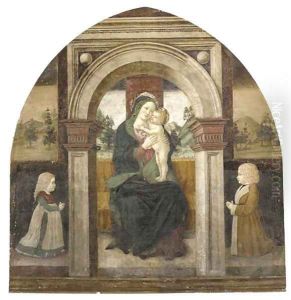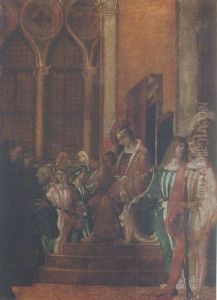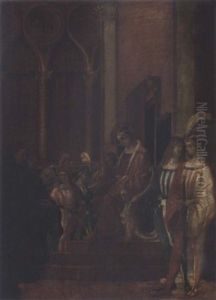Floriano Ferramola Paintings
Floriano Ferramola was an Italian painter active during the Renaissance period, born in 1480 and passing away in 1528. His work primarily flourished in Brescia and its surrounding regions, contributing significantly to the development of the Lombard painting tradition. Despite the lack of comprehensive documentation on his life, Ferramola is acknowledged for his contribution to the Italian Renaissance, particularly for his ability to blend the Lombard painting style with influences from the Venetian School.
Ferramola's artistic journey is marked by his detailed frescoes and altarpieces, which often depicted religious themes with a remarkable sense of emotion and humanism. His work is characterized by vivid colors, careful attention to detail, and an expressive use of light and shadow, traits that have led scholars to appreciate his role in the transition from the late Gothic to the Renaissance style in Northern Italy. Among his notable works is the decoration of the Chapel of Santa Maria dei Miracoli in Brescia, which showcases his mastery in fresco technique and his ability to convey narrative depth and spiritual intensity.
Despite the challenges of attribution that often accompany artists of his time, Ferramola's existing works provide insight into his artistic evolution and his interaction with contemporaneous artistic movements. His influence was not limited to his immediate locale; it extended to the shaping of the Brescian school of painting, guiding future generations of artists in the region. Floriano Ferramola's legacy, though perhaps not as widely recognized as that of his more famous peers, is a testament to the vibrancy and diversity of the Italian Renaissance. His commitment to religious themes, combined with a distinctive stylistic approach, marks him as a significant figure in the rich tapestry of Renaissance art.


